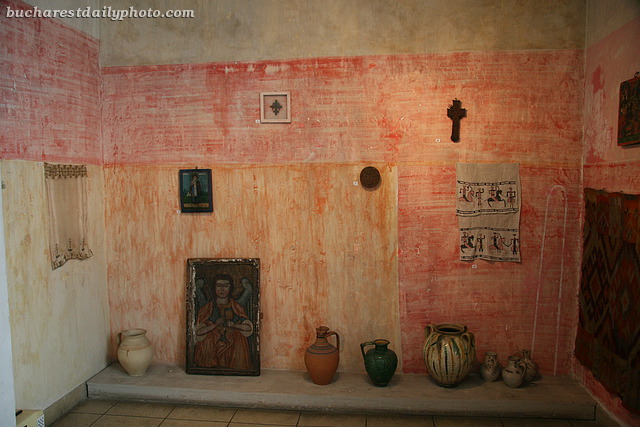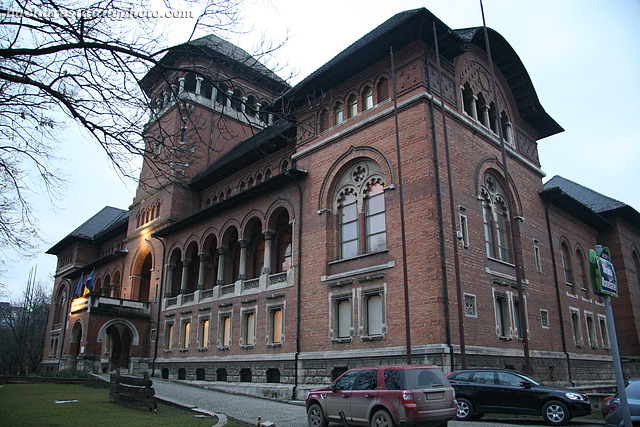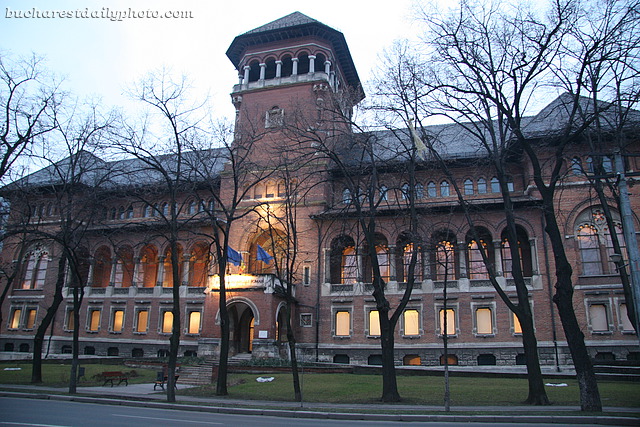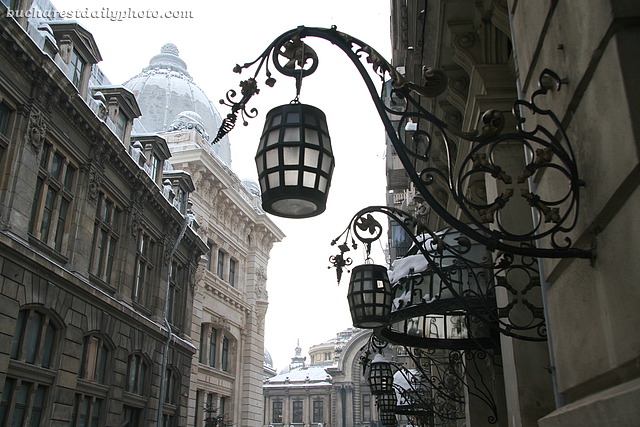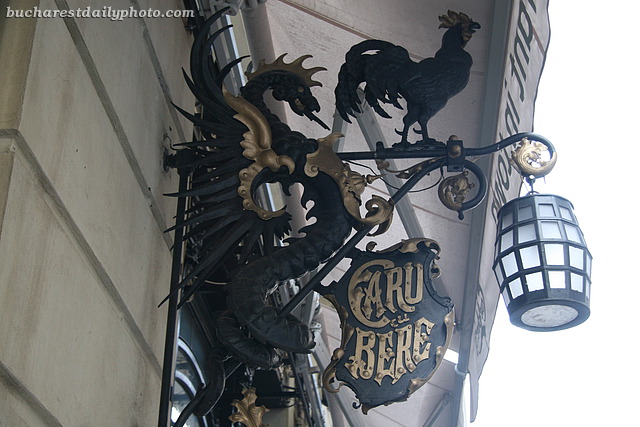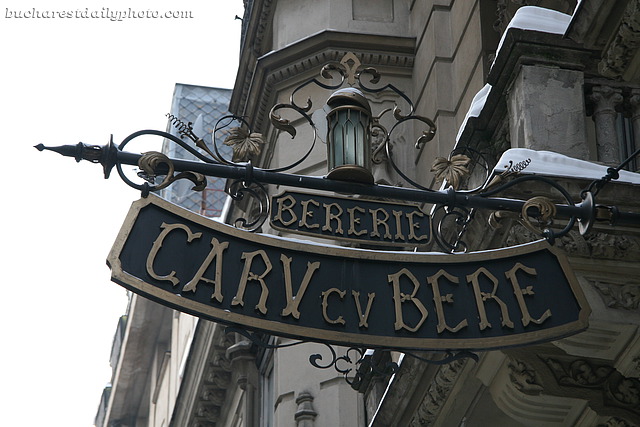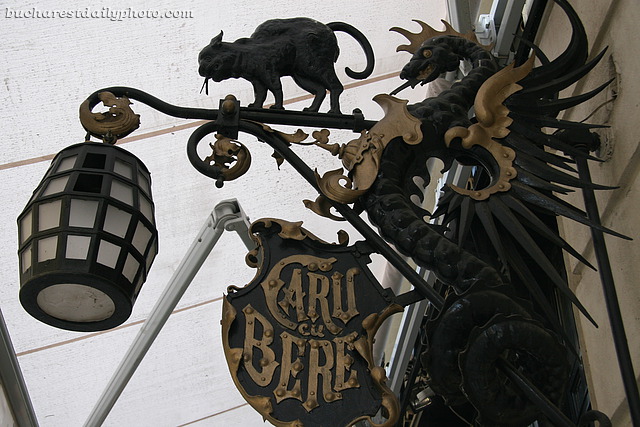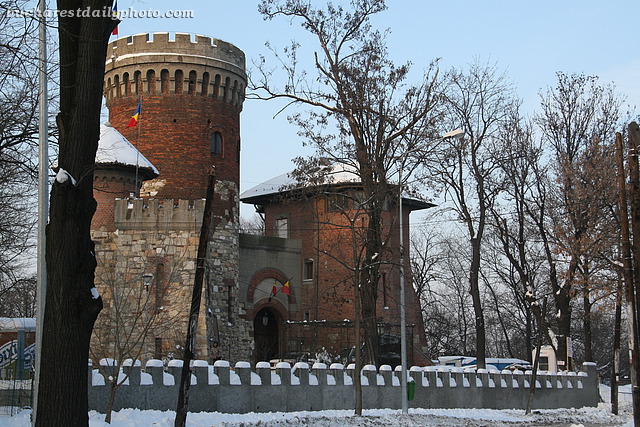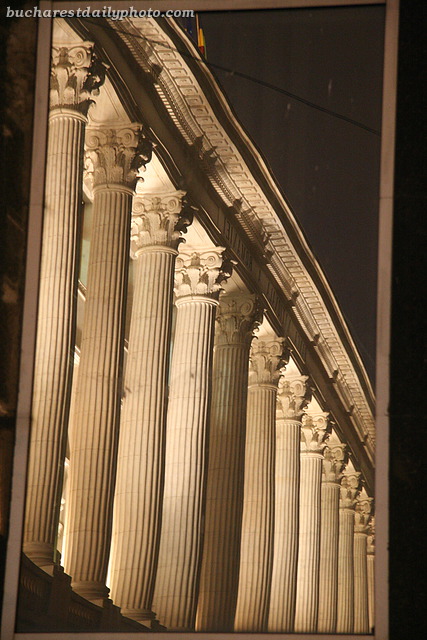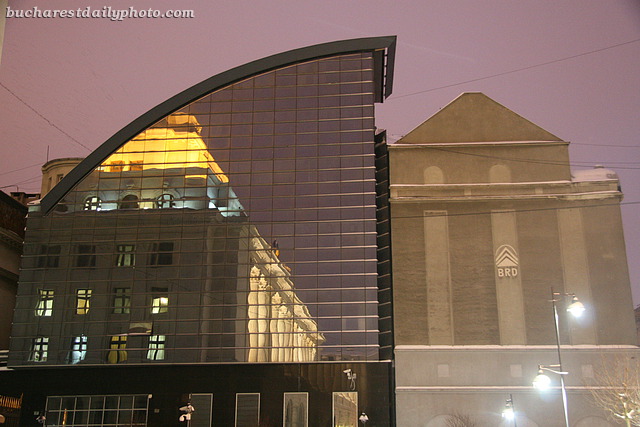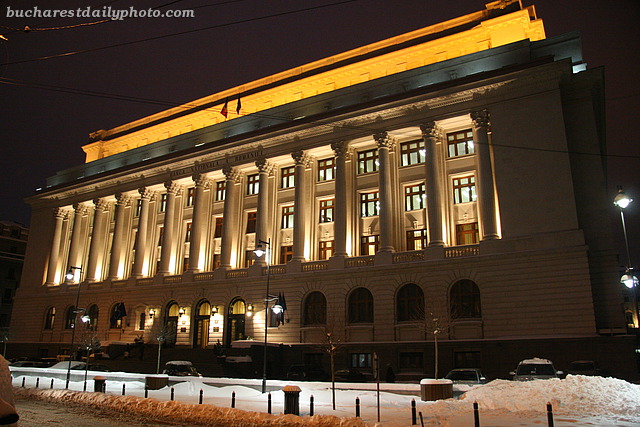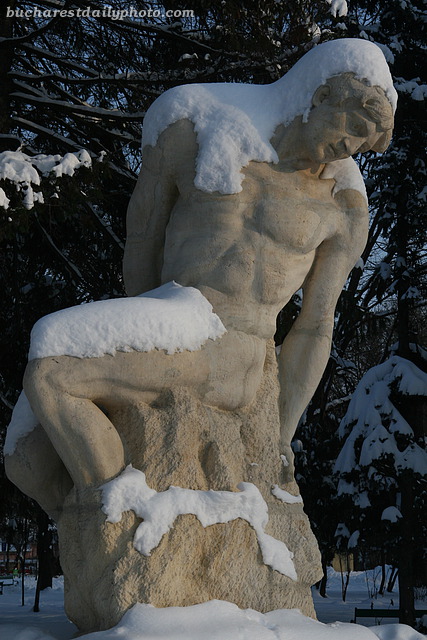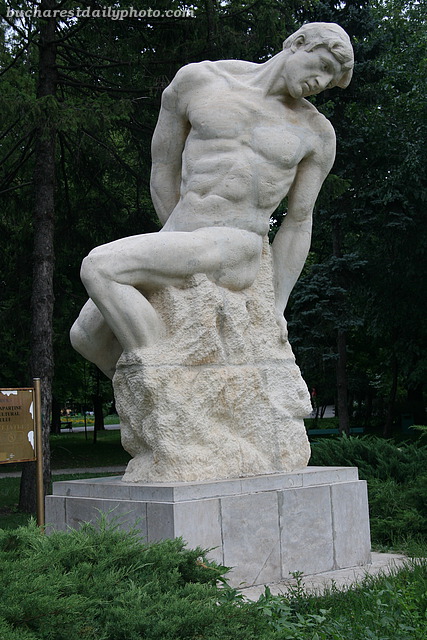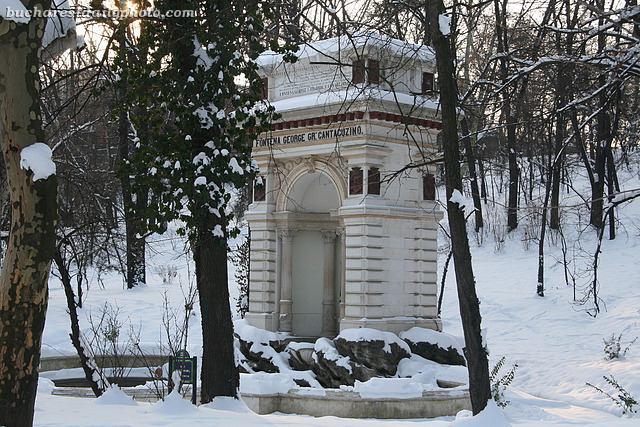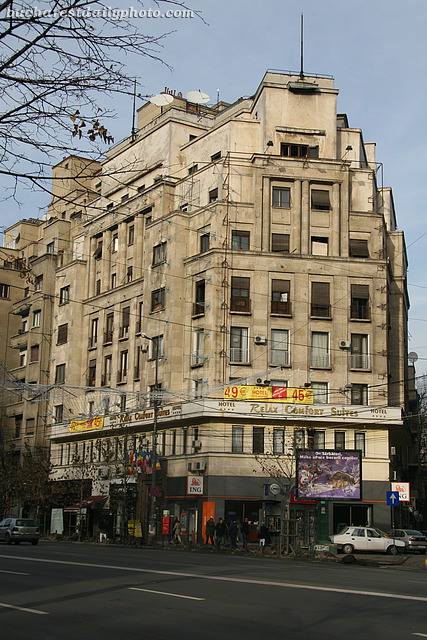What makes this museum special is the way the collection is displayed, less like a museum and more like an art gallery. Objects are not behind glass cases but displayed freely and the display information is hand written on pieces of paper or illustrated by sketches. This somehow cuts the distance between the viewer and the objects, making the impact of the displays greater, more personal. It’s certainly different than other museums I’ve been to. The vision belongs to the museum’s first director after 1990, painter Horia Bernea, and to one of his main collaborators Irina Nicolau. Under their guidance the Museum of Romanian Peasant won the the European Museum of the Year Award in 1996, the first museum in Eastern Europe to be granted this honor.
The Museum of Romanian Peasant is one of my favourite museums in Bucharest. It houses, as the name suggests, a large collection of objects used by Romanian peasants: pottery, textiles, traditional costumes, icons and other religious artifacts, pieces of furniture, carpets etc as well as photographs documenting the customs of rural life. Today’s photographs show the red-brick facade of the building. The museum was founded in 1906 under the name of Ethnographic and National Art Museum and was housed temporarily at another location. Construction to the present building started in 1912, was stopped in 1916 and restarted in 1932. It was completed in 1941, 29 years after it was started. The building is the project of architect Nicolae Ghika Budeşti who designed it as an illustration of the neo-Romanian style, very popular in Bucharest at the beginning of the 20th century. In 1953, the communists “liberated” the building, turning it into a museum dedicated to the history of the Communist Party and sending the collection away. In 1990, after the Romanian Revolution, the collection returned home.
For today, more signs and details from the Caru cu Bere restaurant. Yesterday, after posting the one sign, I decided to show the rest of them as well so I went downtown and took photographs of the other ornaments adorning the entrance to the restaurant. And here they are.
This is one of the signs of the Caru cu Bere restaurant, probably the most known restaurant in town, shown on this blog in an earlier post.
In spite of its medieval look, the castle in today’s photograph is actually not that old. The famous Vlad the Impaler (Vlad Ţepeş in Romanian) didn’t live in it or for that matter live to see it. But if he did live to see it, maybe it would have been a familiar sight, because the castle is supposed to be inspired by one of Vlad’s main fortresses, the Poenari Castle. This similarity is the reason the tower in the photo is called Ţepeş Castle. It was in fact built in 1906 with the occasion of the “General Exhibition of Romania” (also named “Jubilee National Exhibition”), an event modelled after the World Fair organized in Paris in 1900. The event took place in Carol I Park and was intended to show the progresses made by Romania under the leadership of King Carol I. The castle is in fact a water tower, 23 meters tall, 9 meters in diameter. Near the top it has a platform from where one can admire the panorama. It was build after the plans of architect Scarlat Petculescu. After WWI the castle served as a military garrison for the soldier’s guarding the Tomb of the Unknown Soldier which is located nearby. Since 2004 it serves as the headquarters of the National Office for the Memory of the Heroes. At the present moment the tower is undergoing renovation.
Since yesterday I’ve showed you the National Bank building, it’s going to be easy to guess what is showing in today’s reflections.
The National Bank of Romania Palace is a massive building that occupies one city block in the Old Town (Historic Quarter), between the streets Lipscani and Doamnei, Smârdan and Eugen Carada. It sits on the site of one of the most famous buildings in Bucharest, Şerban Vodă Inn, which was located here between the years of 1678-1883. The bank building has two wings and today’s photo shows the new wing built during WWII after plans by architect Radu Dudescu assisted by a group of architects (I. Al. Davidescu, N. Creţoiu, Gh. Nichitovici and G. Vidraşcu). The building is in the Neo-Classical style with Corinthian columns on the facade and monumental granite stairs.
Yes, I know my title sounds silly but I intended it sarcastically 🙂 The phrase doesn’t belong to me, it is in fact a quote. When our president, Traian Basescu, was the minister of Transportation he was asked by reporters about the measures he took to clean the roads that were blocked by heavy snow. In an attempt to find an excuse and make the reporters back off he replied “winter’s not like summer”. This phrase gained a “life of its own”, being repeated over and over and finding its place in the popular culture. A search for the phrase “iarna nu-i ca vara” on google comes up with 1.880.000 results. I don’t think that anyone needs convincing that “winter is not like summer”, but I thought I’ll illustrate this through today’s photographs which shows one of the two statues located in Carol Park and titled “The Giants”. This one was sculpted by Frederick Storck. I just happen to photograph it both in winter and summer and as you can clearly see from the two photographs “winter’s not like summer” 🙂
This beautiful fountain is one of my favourite monuments in Bucharest and every time I find myself in Carol Park I make sure to pass by it. It was built in 1870 by George Grigore Cantacuzino who at the time was the mayor of Bucharest. This fountain replaced an older one, built in the 1792-1793 for tapping the water source that fed Filaret Hill. The older fountain deteriorated slowly and was demolished in 1863. The message written on the upper part of the fountain reads “This fountain was built in 1870 at the expense of the capital’s mayor, George Grigore Cantacuzino, following the vote by the municipal council of Bucharest held on August 8, 1869, when it was decided that the fountain will bear the name of George Grigore Cantacuzino Fountain”. The fountain, built in neoclassical style, is decorated with bass-reliefs representing medieval knights and coats of arms.
A little further down the block lies another corner structure, equally interesting. This one is temporarily without a banner, but if you look closely you can spot the metal frame used for hanging the banners on the facade. Called SUN Apartment building, it was built in 1934 by architect Herman Clejan.
